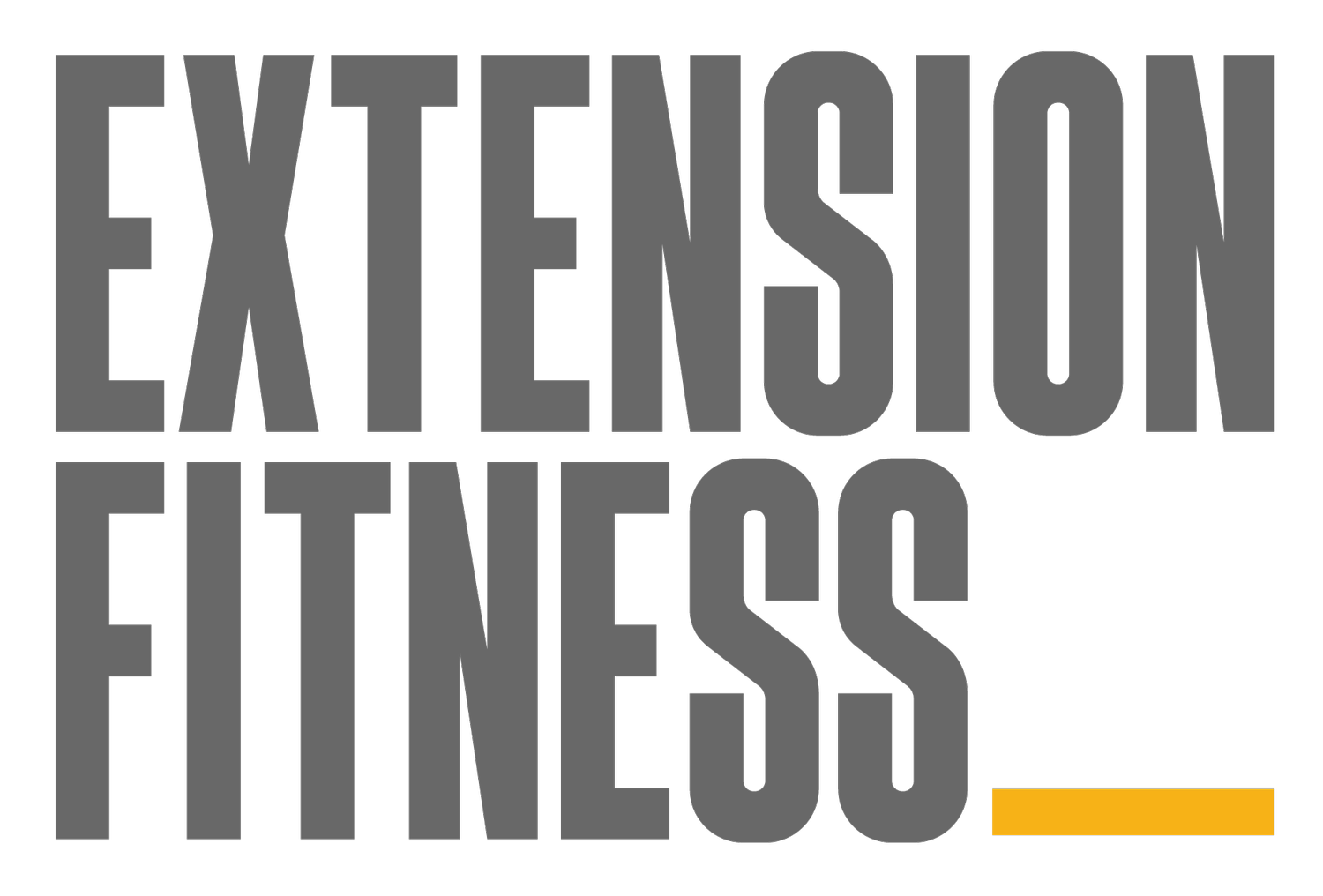Using Reps In Reserve (RIR) in Resistance Training
When you’re doing resistance training, you need to have some idea about how heavy, difficult or intense the applied resistance should be. How much weight? How hard should it feel?
In setting weight or resistance, you can either use an objective system or a subjective system.
An example of an objective system is to use a percentage of your “1 rep max”, i.e. the absolute top amount of weight you can successfully move ONCE. Here’s how it may appear: “do 10 reps at 50% of 1RM (aka 1 rep max)”. In this example, if you 1RM was 100kg, then you’d be doing 10 reps of 50kg.
An example of a subjective system is to use a combination of RPE (or “Rating of Perceived Exertion”) and RIR (“Reps in Reserve”). This is what I use at Extension Fitness. In this system, you make a subjective evaluation of how much weight you can lift on any given effort. You’re still sticking to a plan or program which may specify a lighter or heavier weight on any given day, but the weight you apply will vary slightly depending on how you’re feeling when the time comes to do the session. This allows for an accomodation of the stresses of life; poor sleep, amazing sleep, fatigue, high/low energy and high/low motivation.
I learned this system from Ben Jewett at West Coast Barbell Club in Perth (a private strength training facility). It was developed by a fellow called Mike Tuchscherer - a powerlifting coach and accomplished powerlifter himself. Here’s an article he’s written about it.
The RPE ranking system can be integrated with “reps in reserve” aka RIR as follows. The idea with RIR is; after you lift a weight, you ask yourself “how many more reps could I do before I cannot lift this weight again"?”
1-4 RPE = Very light to light effort
5-6 RPE = Could do four to six more reps (4-6 “reps in reserve”)
7 RPE = Could definitely do three more reps (3 “reps in reserve”)
7.5 RPE = Could maybe do three more reps (2.5 “reps in reserve”)
8 RPE = Could definitely do two more reps (2 “reps in reserve”)
8.5 RPE = Could maybe do two more reps (1.5 “reps in reserve”)
9 RPE = Could definitely do one more rep (1 “rep in reserve”)
9.5 RPE = Could maybe do one more rep (0.5 “reps in reserve”)
10 RPE = I definitely could not lift this weight again (0 “reps in reserve”)
How might this appear in a training program?
Well, a program may say this: “Movement X: 10 reps at 7RPE, 3 sets with 60 seconds rest between sets”. If that was the case you’d start by select you think you can successfully complete 10 reps and then feel like you could do 3 more (3 RIR). After your first set, you’d check in with yourself whether the weight was too light, too heavy or just right for that specified intensity. You may put the weight up, down or keep it the same depending on your answer. What you’re trying to keep constant as a specific intensity level (aka “internal load”) rather than the weight as such.
I like this system. And to the best of my knowledge, it is pretty widely used in the world of competitive powerlifting. Also, it has made inroads into other areas such as strength training for general health as well as endurance sport.
Here’s a video I’ve made which supplements this little article.
